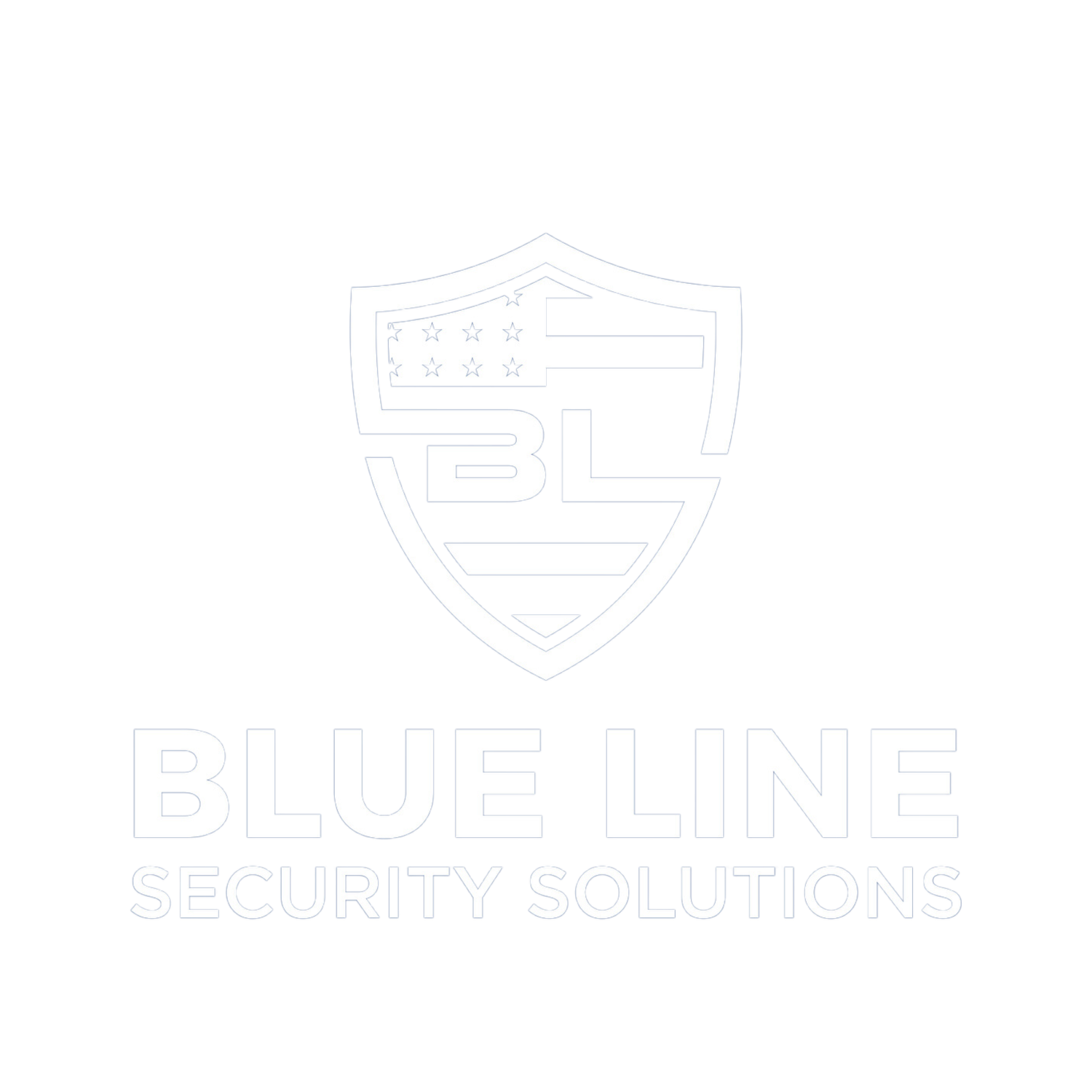Will AI Replace Security Guards?
Why the Future of Security Needs Human Expertise
The rise of artificial intelligence (AI) and automation is transforming industries worldwide, driving efficiency and innovation. From self-driving cars to automated customer service, technology is reshaping business operations. However, in the security industry, one truth remains clear: technology enhances security operations—it does not replace the human element.
As AI-powered cameras and automated patrols become more common, many wonder: Will technology make human security guards obsolete? The answer is no.
At Blue Line Security Solutions, we leverage advanced tools like TrackTik alongside highly trained security professionals to provide reliable protection. The future of security is not about choosing between technology and people—it’s about combining the strengths of both to create smarter, faster, and more effective security solutions.
The Human-Technology Partnership in Security
AI-driven surveillance, automated access controls, and predictive analytics have revolutionized security management. Yet, while these technologies are valuable tools, they are only part of the equation. Human intuition, judgment, and experience remain essential for ensuring safety, mitigating threats, and responding effectively to incidents.
Why Technology Supports—but Never Replaces—the Human Element
1. Technology Tracks—People Respond
AI excels at detecting activity, analyzing patterns, and providing real-time alerts. However, without human intervention, these alerts are meaningless. The ability to assess, respond, and act decisively in critical moments is a distinctly human strength.
Real-Time Alerts & Incident Response – Tools like TrackTik notify security teams of unauthorized access or suspicious activity, but only trained professionals can investigate, de-escalate conflicts, or intervene when necessary.
Crisis Management – During emergencies like fires, natural disasters, or active threats, technology provides alerts, but human guards coordinate evacuations, assist individuals, and maintain order.
Situational Adaptability – Security professionals adjust their approach in real time based on unfolding events—something automated systems cannot replicate.
Consider this: Imagine an AI-powered camera detecting movement in a restricted area. The system triggers an alert—but it’s the guard who notices that the "intruder" is actually a lost child needing assistance, not a threat. That’s the irreplaceable human element.
2. Data Informs—Judgment Decides
AI collects and analyzes vast amounts of data, identifying trends that may indicate potential threats. However, human experience and judgment remain crucial for interpreting that data and making sound decisions.
Predictive Analytics – Systems like TrackTik analyze incident reports to identify high-risk areas, but security teams use this insight to adjust patrol schedules and staffing.
Threat Assessment – Facial recognition software can flag a suspicious individual, but it cannot evaluate body language, demeanor, or contextual clues the way a trained guard can.
Decision-Making Under Pressure – In high-stress situations, human intuition, empathy, and critical thinking guide appropriate responses, while AI operates within predefined parameters.
Example: A facial recognition system flags an individual near a high-security entrance. The software identifies them as a potential threat based on past behavior patterns. However, a trained guard recognizes that the individual is actually a contractor whose ID badge was mistakenly deactivated—a contextual nuance AI cannot detect.
3. Automation Enhances—Humans Lead
Automation streamlines security operations, reduces errors, and improves efficiency. However, leadership, strategic thinking, and decision-making remain human responsibilities.
Patrol Optimization – TrackTik’s automated patrol routing ensures coverage efficiency, but guards rely on their training, experience, and situational awareness to adjust routes based on unusual activity.
Incident Reporting – Digital reporting ensures consistent documentation, but guards’ observations add crucial context.
Customer Service – Security professionals are often the first point of contact for visitors, clients, and employees, providing directions, assistance, and a reassuring presence—something no machine can replicate.
Scenario: A visitor arrives at a corporate building late at night and seems anxious. AI-based access control grants them entry based on their credentials, but a security officer notices their distress and intervenes, discovering they are experiencing a medical emergency. AI may have granted entry, but only human awareness prevented a crisis.
Why Human Intuition Is Irreplaceable in Security
While technology is advancing rapidly, certain aspects of security require human qualities that automation cannot replicate:
Empathy & Communication – Guards can interact, reassure, and de-escalate tense situations through conversation and understanding.
Intuition & Instinct – Years of experience enable security professionals to detect threats that may not be immediately apparent to AI.
Ethical Judgment – Humans can navigate complex social situations, exercising discretion and compassion.
Problem-Solving – Security incidents often require creative, flexible solutions that automated systems are not programmed to provide.
The result? A security service that combines the efficiency of technology with the critical thinking, professionalism, and adaptability of experienced security personnel.
The Future of Security: A Collaborative Approach
A 2025 ASIS International survey found that while many security professionals recognize AI's efficiency-enhancing capabilities, human judgment remains essential in high-risk situations.
The future of security lies in seamlessly integrating technology and human expertise. Key trends shaping the industry include:
AI-Powered Surveillance – Enhanced video analytics will improve threat detection, but human interpretation remains vital for decision-making.
Smart Access Controls – Automated entry systems streamline processes, but security personnel manage escalations and assist visitors.
Drone Patrols – Drones expand coverage in large areas, but human operators evaluate footage and respond to alerts.
Cyber-Physical Integration – Security teams will increasingly collaborate with cybersecurity experts to address both physical and digital threats.
Why Choose Blue Line Security Solutions?
At Blue Line Security Solutions, we don’t believe in technology versus people—we believe in technology with people. By combining state-of-the-art tools with the expertise of our highly trained guards, we deliver security solutions that are intelligent, efficient, and above all, effective.
Our Commitment:
✔️ Harnessing technology to enhance security operations
✔️ Providing rapid, professional responses to incidents
✔️ Building trust through human interaction and communication
✔️ Continuously adapting to evolving security challenges
Secure Your Business with Confidence
When you choose Blue Line, you are choosing a security partner that understands the balance between technology and human expertise.
📞 Contact us today for a free security assessment and see how we integrate technology with professional expertise to safeguard your business.
